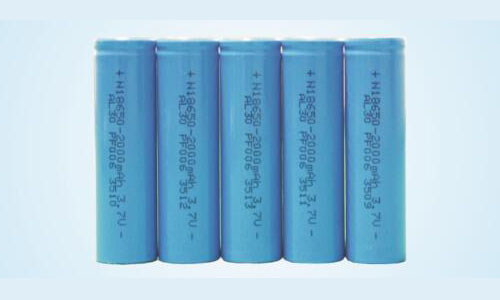How to Prolong Lithium Battery Life-Cycle Life and Charging
May 09, 2020 Pageview:1920
There is a controversy on what is the essential feature of a battery. Much emphasis is focused on life-cycle. Other times safe and higher capacity is more important. All rechargeable cells must wear out, and lithium batteries are not an exception. Manufacturers of batteries consider an end of life when the capacity goes below 80% of rated capacity. Nevertheless, they can still give power but will deliver short run-times. A lifetime of a cell depends on the depth of discharge, chemistry, capacity, and battery's temperature. Let us see how you can prolong lifetime, run-times, and charging a battery.
How do you prolong the lithium battery life?
Here are the factors for increasing a battery’s life.
Reduce temperature
Reducing the temperature of a battery will extend the life span, especially lower than 0%. It results in metal plating above the anode that creates an internal circuit. This causes extreme heat that can lead to a fire outbreak. Most battery chargers are designed to measure temperature when it becomes extreme.
Do not charge to a capacity of 100%
This can be done by getting a less float voltage. It increases life cycle and run-times even when the battery has reduced its capacity. For example, a drop from 100mV-300mV float voltage is able to improve at least twice more. Some chemistry is sensitive to greater voltage. For example, lithium-ion phosphate contains a lower float voltage.
Partial discharge
Before recharging your battery, perform 20 to 30% of the capacity. Partial discharges increase life span. Generally, discharge cycles of 5 to 10 are similar to complete discharge. On the other hand, you should not leave the battery in a deeply charged state, seeing that it shortens life. Above and over, complete discharge that is below 2.5V to 3V must be bot be performed.
Correct charge
The life of a battery is extended by choosing a charger that uses a lower charge current terminator. However, do not charge to a capacity of 100%. For instance, lowering float voltage up to 4.1V is similar to ending cycles of charge while current lowers to C/5. Cells are then charged to a capacity of 85% hence increases life span.
Do not perform deep discharges.
A lithium battery is quickly destroyed by deep charges. It brings an internal metal plating causing a short circuit, which is not safe. Thanks to lithium manufacturers who put a protection circuit in the battery packs. Circuits open connection in case the current goes beyond 4.3V, or it is below 2.5V when discharging or charging.
Do away
The life cycle of a battery is decreased by high discharge and charge currents. Great currents put extreme stress on a cell.
How long do a lithium battery last?
Every user desires to increase the life span of a battery. Nobody wants to spend more cash to buy a cell after a short period. Lithium is known to have the best run times and long life, unlike others. However, it will depend on maintenance and care. The batteries are expensive, and users want to prove their investment.
Even though lithium cells have a long life span compared to other technologies, they have a limited life cycle that loses the capacity of holding charge rapidly. Loss of capacity means aging, and it cannot be reversed. Capacity helps to hold running time for a long period.
Batteries are not made the same, and they need to be protected in order to meet a user's expectation. Following rules on care, you can expect to stay with your battery for two years to 3 years or 300 to 500cycles. This expectancy does not run on full charge cycles. The period is longer because the batteries require low maintenance. Store the battery properly, and you will never spend money sooner like lead-acid batteries.
Here are the number of factors that affect the life span of a battery.
Ambient temperature: the battery is rated on certain operating temperatures. Any alteration will shorten the expected life cycle.
Cycling: full discharge cycles affect the longevity of a lithium battery. Also, it shortens the relative capacity.
Maintenance: despite lithium batteries requiring low maintenance, battery systems can lose capacity if not monitored.
Application: problems can come up when a battery is used for a different application. Some give a high rate for a long period of time while others for a short period.

How often do you charge your lithium battery?
There is a lot of controversy about the issue seeing that lithium batteries are categorized differently. Most manufacturers indicate that they should be charged from 40% to 80%. They can also be drained fully and then charged to 100%. However, you should not leave the charger plugged in like most people. Charging hem wrongly will reduce lifespan, and the battery will not be able to hold a charge. You can completely discharge the cell once each month. Smart batteries have the ability to tell the running time before it dies.
Lithium batteries have a great capacity from first to the last charge. Just like human beings, their performance is affected by too hot or cold temperatures. When charging, use a designated charger. Charge the battery at a normal room temperature that is never less than 0 degrees or more than 40 degrees. Store the cells in a cool and dry place like a fridge that has 25 degrees and below. Above all, make sure the battery is at 40% capacity before storage.
Life span should last for 300-500 cycles or 2 to 3 years. Over a certain time, they begin to reduce their capacity due to various factors. This includes aging, temperatures, cycling, storage, and use. These batteries do well in hot temperatures, unlike cold ones. Cold temperatures fasten internal resistance that stresses the battery to work hard. Side effects like stressing are the reason for short life expectancy.
Final thoughts
Generally, lithium batteries have a great life cycle, low self-discharge rate, higher cell voltage, and higher energy density. Also, they are environmentally friendly and simple to maintain compared to lead-acid batteries. Most portable devices using lithium batteries can operate from one cell. This is because of the higher voltage from 2.9V to 4.2V, that simplifies the design. The lithium technology is still advancing unlike other chemistries. Research is developing to make batteries with high capacity, performance and long life span.
Leave Message
Hottest Categories
-
Hottest Industry News
-
Latest Industry News










